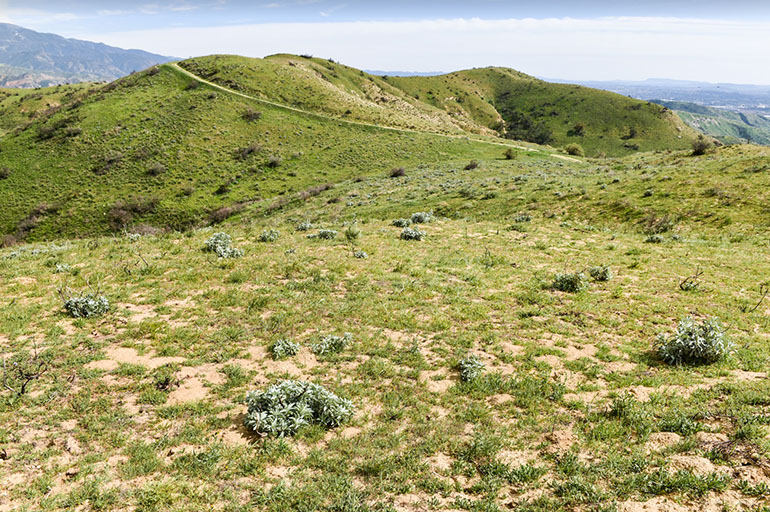
Irvine Ranch Conservancy (IRC) in collaboration with UCI MCRS (Masters in Conservation and Restoration Science) Graduate Students conducted a study in OC Parks’ Limestone Canyon following the 2020 Silverado Fire that looked at the post-fire resiliency of restored coastal sage scrub habitats. On Tuesday, June 7, IRC hosted a live presentation during which the master’s students shared their findings with the public and IRC volunteers.
Master’s students Jessica Rath, Michelle dela Cruz, Rubeen Khunkhun and BryAnna Wertz studied and compared the post-fire recovery of coastal sage scrub habitat that had previously been restored, habitat that is degraded and has not been restored, and habitat that was healthy before the fire without restoration. Comparing data from these areas helped to create a clearer understanding of the resiliency of restored coastal sage scrub habitat to wildfire and the challenges landowners face during the recovery period following a fire.
“Irvine Ranch Conservancy has a long history of collaboration with UC Irvine, especially the Center for Environmental Biology and the Masters in Conservation and Restoration Science program,” said Nathan Gregory, IRC Vice President & Chief Programs Officer. “Our academic partners bring expertise and capacity to help ensure that our management actions are informed by rigorous science, and we can provide support and guidance so that research is directed to answer questions related to our most pressing conservation problems. In this case, the MCRS team provided evidence that our large-scale restoration projects are resilient in the face of too-frequent fire, underscoring the value of that work in improving habitat quality.”
Throughout the study, UCI MCRS students also observed how grassland composition and recovery varies over time in relation to wildfire events, drought, and precipitation. Using monitoring techniques such as the point-intercept method, the students were able to assess changes in plant coverage and growth. When looking at coastal sage scrub communities, the team observed crown sprouting, an adaptation that allows shrubs to regenerate post-fire, and seedling recruitment, by which new plants grow from the soil seedbank.
“The MCRS program is pleased to continue its partnership with Irvine Ranch Conservancy to study restoration and conservation of native plant communities in Orange County,” said Dr. Sarah Kimball, Director of the UCI Center for Environmental Biology School of Biological Sciences. “Our collaboration with IRC helps address research questions regarding restoration methods and plant community health over time.”
The UCI MCRS study also found that invasive plant species tend to grow back faster, threatening the success of native plant recovery and confirming the importance of invasive species control efforts post-fire. However, the students also found that IRC’s restoration projects have successfully assembled native plant communities that are resilient to fire. Given time, these plant communities can bounce back on their own, proving restoration efforts are sustainable and valuable for the long-term health of the land.
For more information about the Irvine Ranch Conservancy and restoration efforts on the Landmarks, visit IRConservancy.org.
